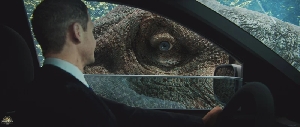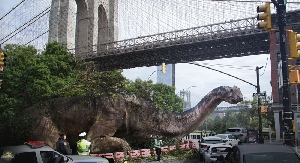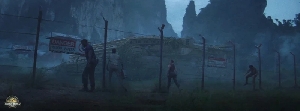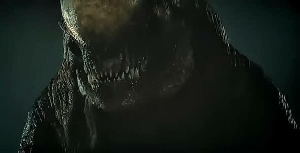Make your own dinosaur
Dinosaurs Forum Topic

Allotitan
MemberCompsognathusMay 12, 20143783 Views8 RepliesLike the title states create your own dinosaur species or subspecies! give stats and a brief summary about it
example:
Allotitan colossus
lenght: 50 ft long
height: 30 ft tall
weight: 7.5 tons
This Jurassic predator hunted the largest dinos alive: the sauropods
they live in north america and are ruthless predators. They are like typical allosaurs and have small eye crests
When life gives you lemons, don't make lemonade. Tell life I don't want you're damn lemons, and then squeeze them into life's eyes!
Replies to Make your own dinosaur
Hey Guest, want to add your say?
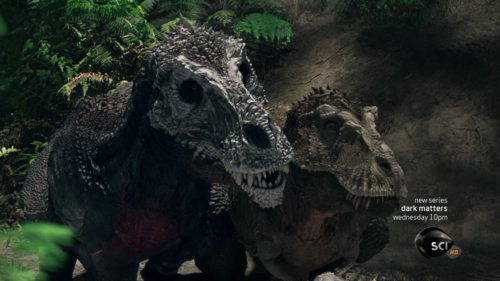
Ultraraptor americanus
Length: 40-45 feet long
Height (at hips): 20 feet tall
Weight: 5 tons
Ultraraptor would have been the world's largest dromaeosaur. It would have lived in the late Cretaceous, where it lived alongside Tyrannosaurus rex, and frequently competed with it.
Ultraraptor would essentially be a giant Utahraptor, with 3 foot long talons on their second toes, and incredibly thick hand claws.
Neither gender would have a significant size advantage over the other, but their plumage would differ. Males would be much brighter, with more blue and red, while the females would have bright orange and green feathers.
Ultrapraptor would have been perfectly capable of solitary hunting, but they would prefer hunting in pairs, usually as mates or siblings.
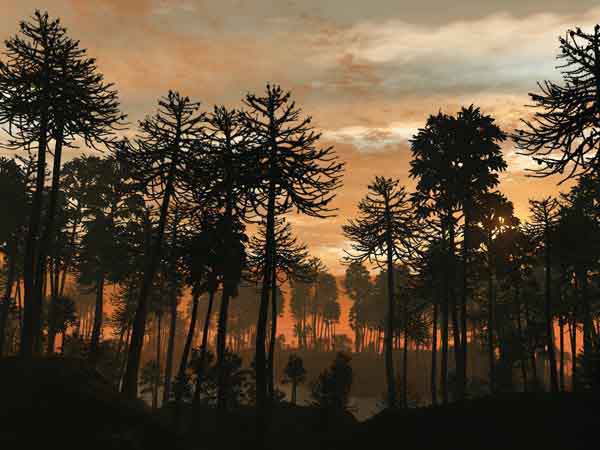
Vulcanodromeus sinosis (Chinese Volcano Runner)
Length: 7.8-8 feet
Height: 2.5-2.9 feet
Weight: 35-70 pounds
Was found during the Late Jurassic 162 million years ago. Was found in a well preserved group buried under water compacted volcanic ash. Was closely related to and found in the same region as Guanlong making it one if not the oldest member of its family.
Looked and acted similarly to Guanlong, though it was smaller and probably faster due to its longer, more powerful legs for its body size. Also had a smaller head crest. Males were smaller then females with larger head crests for their body size.
This was gathered because the group had members of different ages alluding to a family group and giving a clear view into the development of this species as they grew. Also skin and feather imprints were recovered along with their color pigments.
Males were rusty red with bright lemon yellow display feathers on its head, arms and tail. The males crest was also lemon yellow. The females were a dappling of brown with young leaf green replacing the males display colors. The young were a darker version of the female and lightened as they grew, with the males slowly changing color upon maturity. Both had sandy brown skin and lighter undersides.
Ian Malcolm: No I'm, I'm simply saying that life - uhhh - finds a way.

Gigantodon Europius
"Giant Tooth of Europe"
Maximum Length- 55 feet (16.8m)
Maximum Height- 19 feet (6.8m)
Maximum Weight- 15,432 pounds (7 metric tonnes)
Fossil Location- Europe (England, Germany, Italy, Spain)
Age- Mid to Late Cretaceous (90-65 million years ago)
The last in a long line of Carnosaurs, specifically stemming from the Carcharodontosaurid family which consists of species such as Carcharodontosaurus, Giganotosaurus, Acrocanthosaurus, and Tyrannotitan. Gigantodon was perhaps the largest of the group, except Giganotosaurus, although that is under debate.
By far the most prominent feature of Gigantodon, and for what it is named, is a pair of huge metre long teeth that sat in the upper jaw similarly to those found in sabre-toothed cats such as Smilodon. However unlike it's mammal counterparts, Gigantodon's sabre-teeth were serrated, and similar in shape to the rest of the teeth in the jaw. Fossils found in England, Germany, and Italy suggest that the sabre teeth of Gigantodon were much larger in male specimens than in females, almost twice as large in some cases. This implies that they were used in courtship battles between males in order to win the right to mate, a bond which is thought to have lasted the creature's lifetime as male and female Gigantodon have frequently been found together.
Upon further examination of the sabre teeth, it was found that they were much denser than the rest of the teeth in the jaw, an uncharacteristic trait for a Carcharodontosaurid. Fossils of several European herbivore species have also been found with enormous punctures in their vertebrae, as if they were skewered with a spear. This confirmed that Gigantodon used these teeth as a very effective weapon.
It's believed that Gigantodon was an ambush predator, using short bursts of tremendous speed to run down smaller prey and grasp them them with their three clawed hands, then use their powerful neck and jaw muscles to drive their sabre teeth into the prey, cutting off the airway and shattering the spine. However the Gigantodon would not then consume the prey on the spot, they would drag the prey back to a lair which they share with a mate and then consume it there. This is known because several sites across Europe have uncovered Gigantodon lairs, the telltale sign being a collection of bones from different species of herbivore all found in the same place.
The preferred prey of Gigantodon seems to have depended on whether they were hunting alone or in pairs, they were sociable animals, sometimes congregating in larger numbers to bring down larger prey, similarly to Giganotosaurus. When hunting alone, adult Gigantodon would often go after smaller prey, such as Europasaurus, Pterosaurs, and even Gargantuavis, a six foot tall flightless bird. When a Gigantodon got close to (or reached) full size, it was then able to tackle larger prey like Ampelosaurus and Iguanodon or even armoured herbivores such as Anoplosaurus. As previously mentioned, it is believed that Gigantodon would occasionally form small groups in order to bring down the largest of available prey, this being Titanosaurs like Atsinganosaurus or even giants like Angloposeidon.
This placed Gigantodon firmly at the top of Cretaceous Europe's food chain, smaller predators in it's environment were seldom considered threats due to the enormous size difference. However, this also meant that Gigantodon had to consume more meat in order to grow than other predatory dinosaurs in the same area. This resulted in other meat eaters sometimes being targeted, Abelisaurs like Arcovenator are thought to have been targeted by Gigantodon while scavenging a carcass. Having so few rivals is perhaps the main reason why Gigantodon was around from 90 million years ago to the very end of the age of dinosaurs, 65 million years ago, meaning Gigantodon was around for a colossal 25 million years. Making it one of, if not the most successful carnivorous dinosaur of all time.
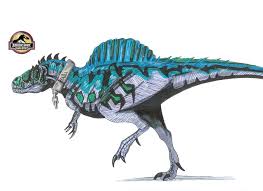
Torgosaurus Rex laramidiensis
length: 65ft
hieght:30ft
wieght:15 tons
This supersized carnivore resembled a cross between a T. Rex and Spinosaurus Eagypticus but bigger and actual grasping arms. it lived throughout the Late jurassic and to the end of the Mesozoic Era praying upon siesmosaurus and later all large herbivores of the Cretaceous
Valkyrsaurus Enragicus
Length:45 Ft
Hight:19.5 ft
Mostly don't hunt it is the only one of her kind and is a alien experiment. She is beautiful and elegant but, do not make her angry she had her feathers turned to razors and teeth into energy weapons of death. She also is able to use two metal flaps that fling up and down to communicate and befriend. She is C.Saharicus but she was experimented on after all.
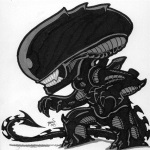
Hey yall keep capitalizing the species name, in scientific naming conventions the species name is always lower case.
ie Correct: Tyrannosaurus rex, Incorrect: Tyrannosaurus Rex

Sapienraptor teja (Texan Wise Plunderer)
Size: 8 ft long, 5 ft tall (minimum adult size)
Weight: 300 pounds
Its evolution-line shares a common ancestor with Dakotaraptor but is derived enough to be placed in its own clade or tribe Sapienraptora. When compared to its relatives the Sapienraptor has key deviating anatomical features: Rotating wrists which it evolved these to better manipulate its surrounding environment such as digging for small mammals or making make shift spears, given most of its raptoral traits have soften.
Heterodont teeth for its more diverse diet as it evolved to be more of a generalist. Its diet can range from Meat, Fish, Berries, and Fruits.
Its intelligence is that of a Homo habilis.
It lived on a coastal archipelago that would be later known as Texas. Its not at the top of its food chain, since coastal subspecies of Dakotaraptor dominate the top along side a diminutive Tyrannosaurid genus.
The Sapienraptor are monogamous as in they pare for life; Sapienraptors also live in bands of at least 7 families. Should their pack get too big it will splinter and migrate from its parent pack to avoid resource strain but also to maintain genetic diversity.
Are you an avid Jurassic World fan looking for a dedicated online community of likeminded fans? Look no further! Create your own profile today and take part in our forums and gain XP points for all the content you post!


